Tohoku Region Rebuilding for a Better Tomorrow
Photo Gallery 3 - Fascinating Tohoku
Regional foods
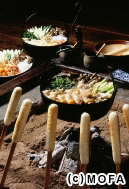
- AKITA / Kiritanpo nabe
Mashed cooked rice pasted onto sticks, toasted on an open hearth with a chicken and vegetable stew.
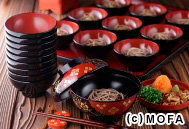
- IWATE / Wanko soba
A traditional style of serving soba noodles in small bowls, with as many refills as you like.
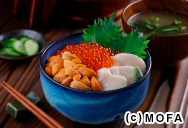
- IWATE / Sanriku donburi
A rice bowl topped with the many varieties of seafood caught off the Sanriku coastline.
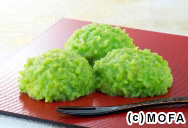
- MIYAGI / Zunda mochi
Rice cakes wrapped in a paste of mashed and sweetened green soybeans.
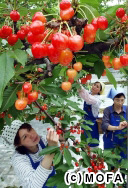
- YAMAGATA / Cherries
Satonishiki cherries are one of the most popular varieties eaten in Japan.
Traditional crafts

- AOMORI / Tsugaru kites
This traditional style of paper kites is decorated with pictures of heroic samurai.
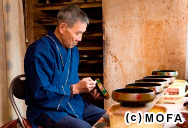
- AOMORI / Tsugaru lacquerware
A craftsman painstakingly applies one of many layers of lacquer.
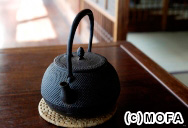
- IWATE / Nambu tetsubin
The decorative exterior of these cast iron kettles increases surface area to improve heat retention.
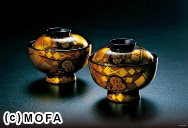
- IWATE / Hidehira lacquerware bowls
This diamond design in gold leaf dates back to Fujiwara Hidehira, the region's 12th century ruler.
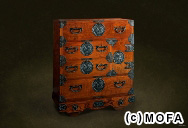
- IWATE / Iwayado tansu
Lacquered tansu chests with elaborate metal fittings originated in the time of Fujiwara Kiyohira.
Architecture and hot springs
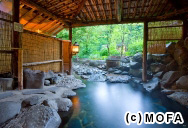
- AOMORI / Aoni hot spring
The Aoni onsen hot spring resort lies deep in a hidden mountain valley.
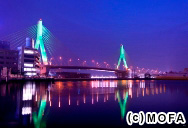
- AOMORI / Aomori Bay Bridge
Brilliantly illuminated at night, the 1,219m bridge spans the harbor of Aomori City.
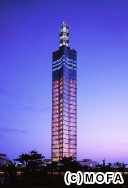
- AKITA / Port Tower Selion
Faced entirely in reinforced glass, the 143m tower rises above Akita Port.
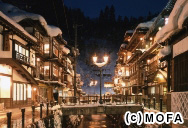
- YAMAGATA / Ginzan hot spring resort
Traditional onsen inns line the streets of this hot spring resort on the Ginzan river.
Science and technology
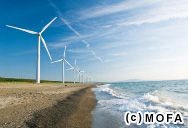
- AKITA / Wind power on the Kamaya coast
Giant wind turbines line the Kamaya coast, providing clean power to the region.
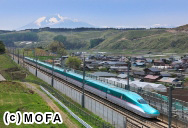
- IWATE / Hayabusa (Tohoku Shinkansen)
Hayabusa, the newest Tohoku Shinkansen train, reaches 300km/h in the countryside near Mt. Iwate.
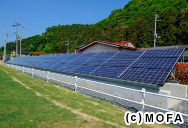
- MIYAGI / Solar power
More households now use solar power to generate their electricity.
Scenery
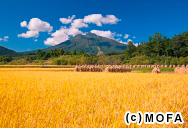
- AOMORI / Rice stooks near Mount Iwaki
Rice sheaves stacked up to dry. A common sight in fall near Mount Iwaki, Aomori.
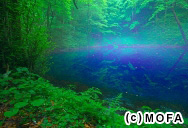
- AOMORI / Aoike Pond, Lake Juniko
Morning mist over one of the ponds of Lake Juniko in the Shirakami Mountains, a World Heritage.
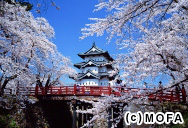
- AOMORI / Hirosaki Castle
Hirosaki Castle and its famous cherry blossoms.
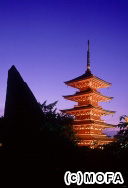
- AOMORI / Pagoda at Saisho-in Temple
The historic five-storied pagoda of Saisho-in Temple in Hirosaki City dates from 1667.
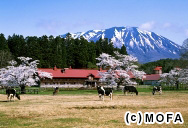
- IWATE / Cows grazing near Mount Iwate
Dairy cattle graze in the pastures of Koiwai Farm, Iwate.
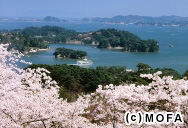
- MIYAGI / Matsushima
Matsushima Bay contains almost 260islands, and is famous for its beautiful scenery.
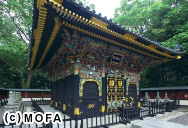
- MIYAGI / Zuihoden Mausoleum
This mausoleum in Sendai City is the resting place of Date Masamune, a famous feudal lord of the 16-17th century.
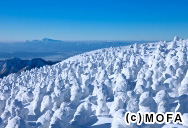
- YAMAGATA / "Snow monsters" of Mount Zao
Trees covered in snow frozen by the wind into odd shapes on the famous ski slopes of Mount Zao.
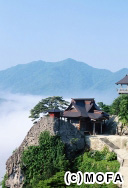
- YAMAGATA / Risshakuji Temple
A mountain temple, built in 860, perched above steep cliffs in Yamagata.
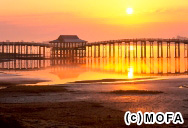
- AOMORI / Tsuru no Mai Bridge
A 300m arched bridge spanning Fujimi Lake in Tsugaru. Its name means "dancing crane".
Festivals
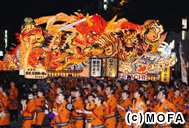
- AOMORI / Aomori Nebuta Festival
The highlight of this famous festival is the procession of floats bearing enormous illuminated paper sculptures of historic warriors.
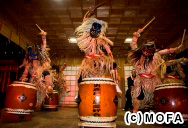
- AKITA / Oga Namahage
Namahage is a traditional ritual when men dressed as demons visit homes to banish sickness and invite good fortune.
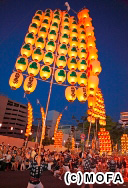
- AKITA / Akita Kanto Festival
Men parade, carrying long bamboo poles bearing dozens of huge lanterns shaped to resemble rice sacks.
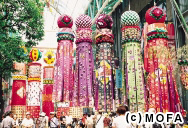
- MIYAGI / Sendai Tanabata Festival
The city of Sendai is decorated with gigantic streamers covered with prayers and wishes.
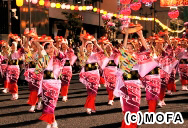
- YAMAGATA / Hanagasa Festival
The festival features a parade of dancers holding conical hats decorated with red flowers.
Fukushima
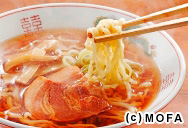
- Regional foods / Kitakata ramen
Kitakata ramen are thick, curly noodles in a delicious soy sauce based broth.
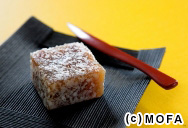
- Regional foods / Kurumi yubeshi
This traditional Japanese confection is made from sticky rice and walnuts.
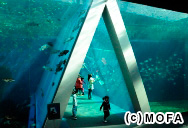
- Sightseeing spots / Aquamarine Fukushima
Iwaki City's environmental aquarium reopened in July after tsunami damage was repaired.
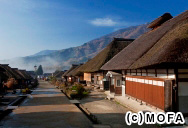
- Sightseeing spots / Ouchi-juku
This small village of traditional thatched buildings was a post station in the Edo period.
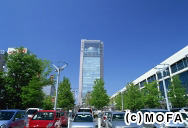
- Sightseeing spots / Koriyama Big Eye
In front of Koriyama Station, the 24-storey Big Eye complex houses offices, shops and a planetarium.
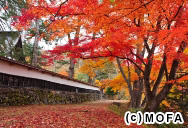
- Sightseeing spots / Yanaizu Fukumankokuzo
An ancient temple in Yanaizu, Aizu Wakamatsu, famous for its red leaves in fall.
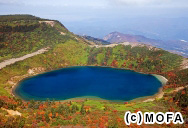
- Scenery / Goshiki-numa Lakes
Red fall leaves in the emerald waters of one of the hundreds of lakes and ponds around the foot of Mt. Bandai.
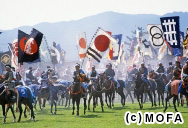
- Festivals / Soma Nomaoi Festival
Youths clad in feudal period armor parade on horseback in this famous festival.
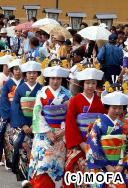
- Festivals / Aizu Tajima Gion Festival
The festival features a parade of unmarried women clad in gorgeous traditional wedding garments.
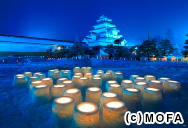
- Festivals / Aizu Candle Festival
Tsuruga Castle rises above the mysterious sight of thousands of glowing hand-painted candles.

- Events / Soma lantern balloons
In a memorial event six months after the earthquake, Soma residents launch lantern balloons to fill the sky with lights.
Photo Gallery 1 | Photo Gallery 2 | Photo Gallery 3 | Back to Index

 (Open a New Window)
(Open a New Window)